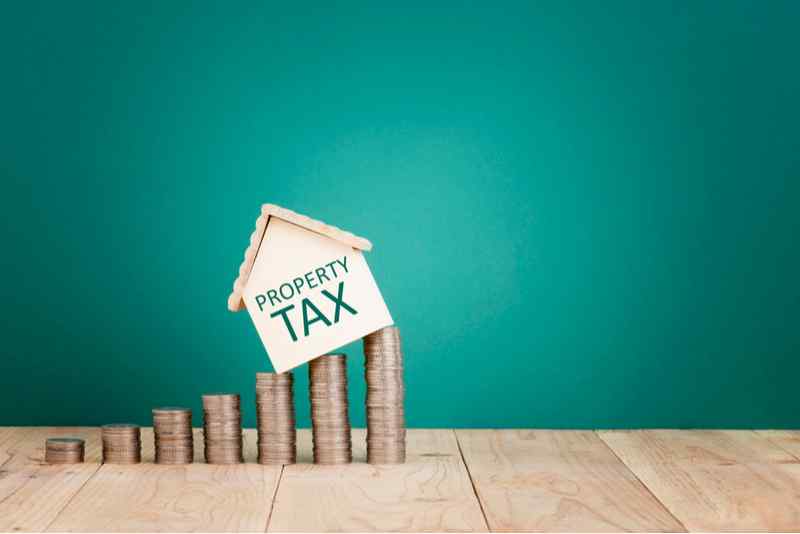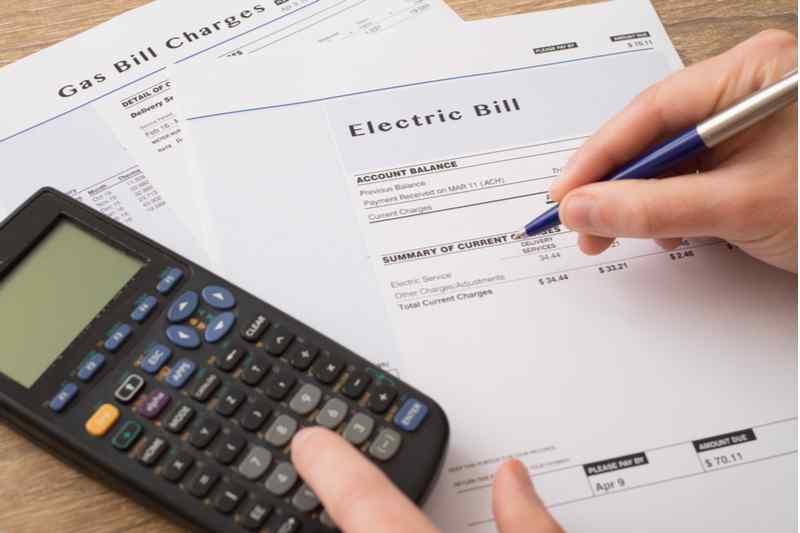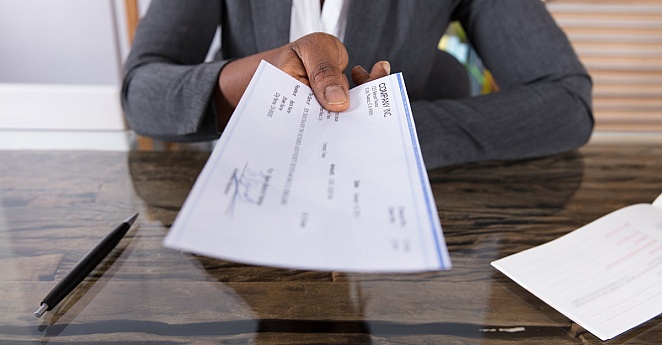The Difference Between Gross Rent and Net Rent
When looking for a new place to live, one of the first considerations a person has is whether they can afford the rent cost. Not all leases are the same, so it's important to understand the fundamental difference between the two basic lease types — gross rent and net rent — in determining just what exactly your monthly rent check is paying for.
Gross Rent
Gross rent leases require the renter to pay a flat monthly rate to live on the property. Gross rent covers the entire cost of living on and maintaining the property, including basic utilities such as water, heat, and electricity. Some gross rent contracts may include other additional amenities like internet or cable television service. Gross rent also reflects building maintenance costs and upkeep, such as plumbing, landscaping, and trash disposal.
You may be wondering: what does gross rent mean for your wallet? Paying a gross rent lease means that you will pay the same amount no matter how much water, heat, or electricity you consume in a month.
A gross rent agreement is based on estimated operating costs. When setting rent, a landlord takes into account things like account taxes, building interest rate, insurance, maintenance, repairs, and utility costs.
One common pitfall of this lease structure is that landlords may overestimate these costs, and the tenant may end up paying more than the true cost of living there.
Modified Gross Lease

The above explanation refers to what is called a full-service gross lease. In a full-service lease agreement, the landlord covers all building-related expenses. There is also what is called a modified gross lease. This is a slightly different model than a full-service gross lease. The tenant pays a base amount per month that is fixed. In addition, the tenant shares a few costs with the landlord.
What specifically the tenant splits with the landlord varies, but a few common shared costs are:
- Property taxes
- Utilities
- Building insurance
- Maintenance
These leases are most common in commercial real estate, such as office buildings with more than one tenant. The modified gross lease can be considered a combination of the basic gross lease and net rent lease. Under this agreement, operating costs become the tenant and landlord's responsibility. The extent to which each party is responsible can vary and should be specified in the lease contract. One common arrangement is for the tenant to pay for tax, maintenance, insurance, utility, etc., costs for the tenant's particular unit. Therefore, this type of lease is common in apartment buildings where multiple tenants are sharing a space. In this way, the tenant is subsidizing the total cost of building maintenance costs but, in theory, paying only for their space in the building. However, the tenant might also be held financially responsible for anything considered "common area maintenance," such as landscaping.

This is where it gets a bit complicated; some modified gross lease agreements may stipulate that the tenant pays for interest in property taxes for the building that may accrue since the agreement's beginning. In this case, the landlord will establish a "base year" that will be used to calculate tax increases. This is calculated according to a gross rent multiplier (GRM), a building's gross rental income before property tax, insurance, and utilities. Essentially, GRM equals the number of years it will take for the property to pay for itself in a gross income multiplier. In this situation, the landlord can collect additional tax charges at the end of each year.
Net Rent
Net rent is the other basic rent category. There are three subcategories of net rent: triple net, double net, and single net. As opposed to gross rent, net rent requires the tenant to pay for the actual (not estimated) cost of building operation and maintenance. In this type of rent agreement, the tenant pays for the landlord's costs under a gross rent lease. Costs a tenant must pay for under a net rent lease include:
- Utilities (heat, water, electricity)
- Trash disposal
- Repairs and maintenance
The fundamental difference between net rents and gross rents is that net rent changes month to month because it is adjusted for how much it actually costs to operate and maintain a unit month to month. This means you are paying for exactly how much energy you are consuming, anything that needs repairing, etc., any given month. If, say, one month you leave your appliances plugged in for an unusually long period or forget to turn off the lights when you leave the room, your monthly rent bill will reflect this.
As a caveat, any special promotions offered by a landlord when you first sign a lease (such as free or discounted rent for the first month) are considered an example of net rent. In these scenarios, you may not receive a bill for your first or last month, or the discounted rate may be spread across the first year of your lease. In either case, this is an example of net rent.
Triple Net Lease
In a triple net lease, you are responsible for paying a share of property taxes, insurance costs, and common area utilities. Also, you are responsible for all costs relating to your living space. Common area utility costs are divided equally among the building's tenants.
Double Net Lease
Double Net lease agreements require the tenant to pay rent plus a share of property taxes and insurance. They also pay for utilities and janitorial services required for their individual living space.
Single Net Lease
In a single net lease agreement, the tenant pays rent plus property taxes and utilities and janitorial services required for their living space. The landlord covers every other building cost.
Gross Rent vs. Net Rent
Below we'll look at a gross lease vs. a net lease to determine which is better for you.
Gross Rent at a Glance
- Most common type of residential lease
- Utility, maintenance, and common area maintenance fees are split evenly among tenants
- A consistent, flat rate each month is easier to budget for
- Landlord responsible for all maintenance fees
- Rent expenses are estimated, meaning you may overpay
In a gross rent lease structure, the landlord takes on the bulk of the entire building's expenses. The amount a tenant pays is averaged among all the other tenants. This means that every tenant pays a flat rate regardless of how much they actually cost the landlord in utility usage and maintenance. Someone using more energy — such as electricity, water, or gas — will pay the same amount as you in rent. On the tenant's end, there is no monetary motivation to save energy. Often, this type of lease structure results in the landlord being motivated to install energy-efficient appliances because they are the ones footing the bill.
Budgeting may be easier in a gross rent lease structure because the amount of money you spend on living expenses each month never changes. Even if you consume a lot of energy and accrue various maintenance fees for the landlord in one month, your rent will be no higher than in the coming months. For example, if you live somewhere where temperatures drop in winter and you use a lot of energy to heat your apartment, you will not pay more for your rent in winter months than in temperate summer months. This factor alone may make this lease option attractive for tenants living in states with harsh temperatures throughout the year.
Even when something in your living space breaks down, you are not expected to foot the bill. The landlord is responsible for arranging repairs. This is a double-edged sword. It means that the speediness and quality of essential repairs and maintenance in your living space are up to the landlord. It's not uncommon for tenants to bemoan how long it takes for a landlord to get around to repairing broken appliances and utilities. Therefore, you should make sure a landlord in a gross rent agreement has a good track record of being timely and responsive with maintenance requests. It would be best if you also were sure to inspect the space before moving in to get an idea of how run-down it is. Be sure to ask the landlord about any recent renovations as well. You don't want to be stuck in a situation where you have no say in when a leaky pipe or broken appliance gets fixed. Remember that what you save in maintenance costs, you make up for in lack of autonomy.
Landlords use a gross rent multiplier formula to determine the worth of the building.
Because gross rent is based on the estimated cost of living space upkeep according to this formula, the landlord may overestimate rent, resulting in a higher rent payment than necessary. Unfortunately, this is exceedingly common. If the landlord does not overestimate the rent, they may underestimate it and operate at a deficit. Therefore, gross rent typically amounts to a larger monthly rent payment than other lease structures. On the other hand, part of what you're paying for is security and predictability.
Net Rent at a Glance
- Rent fluctuates month to month depending on utility usage
- Tenant responsible for all repairs and maintenance for living space
- The bulk of costs put on tenants, but tenants pay only for what they use
Some people appreciate only having one flat fee to worry about regarding their living expenses, while others prefer to be thrifty and pay only for what they use. Net rent allows for the latter scenario. On the other hand, this means that your rent will fluctuate month to month, and forgetting to turn the lights off or leaving an appliance plugged in for an extended period may result in some hefty utility costs.
Under a net rent lease, tenants are responsible for all repairs and maintenance to their living space. This means it would serve you well to inspect the apartment you intend to rent. Pay attention to the plumbing, fixtures, and walls, and look for any signs of damage such as mold, mildew, or infestations. If the place is exceedingly run-down, repairs — and the fees that come with them — are inevitable. On the bright side, you are in full control of how repairs are handled. If your landlord isn't particularly concerned about maintaining the space, at least you'll have a say in what gets done.
In a net rent agreement, the bulk of costs are put on the tenant. In a net rent agreement, the fluctuating building operation costs are shifted from landlord to tenant. On the upside, tenants are only paying for what they need and use. They pay for the actual rent cost rather than an estimated cost, meaning that rent may be lower overall.
Emergency Cash to Pay Rent

If you have a net rent agreement with your landlord, you take on the responsibility of paying for utilities, building maintenance that affects your individual living space (and possibly common areas), and repairs. Emergency repairs or harsh winter months that require continuous heating can make your month-to-month costs fluctuate. If you aren't prepared for this fluctuation, you may find yourself short of cash one month and have to make some difficult decisions about what you can reasonably go without.
Before signing a lease, you should do your best to consider every possible cost that might factor into your monthly rent costs. If you're unsure whether you can afford to rent a place, it's best to err on the side of caution and look for somewhere more affordable.
Still, sometimes even when you can afford your rent, emergencies arise that may cause financial strain. For example, an unexpected repair or utility charge can send you into financial turmoil.
In an emergency where you can't pay your bills, you might consider a payday loan. Payday loans are short-term cash advances paid off within two weeks or whenever you receive your next paycheck.
Payday advances are typically marketed to consumers who have a low or nonexistent credit score, as they are relatively accessible and easy to apply for. While they are not practical for regular use, they can be useful in times of emergency when a consumer has few other options.
How to Apply for a Payday Loan
To apply for a payday advance to be used as a rental loan, you can start by filling out a request form. Online lenders and many storefront lenders have request forms available online. In the initial loan request, the lender will ask for the following information:
- Personal information, like your name, address, and phone number
- A valid government-issued photo ID proving you are at least 18 years of age
- Business information, like your employer or revenue source
- Bank information, like your account number
Keep in mind that a lender may have additional requirements, but these are the minimum criteria to be eligible for a payday loan.
After filling out an application and attaching the required documentation, a lender will either approve or deny your request. If you're approved, the lender will extend an offer, which you must then read and sign. A payday agreement is a legally binding contract, so be sure you know all the terms and conditions set by the lender.





